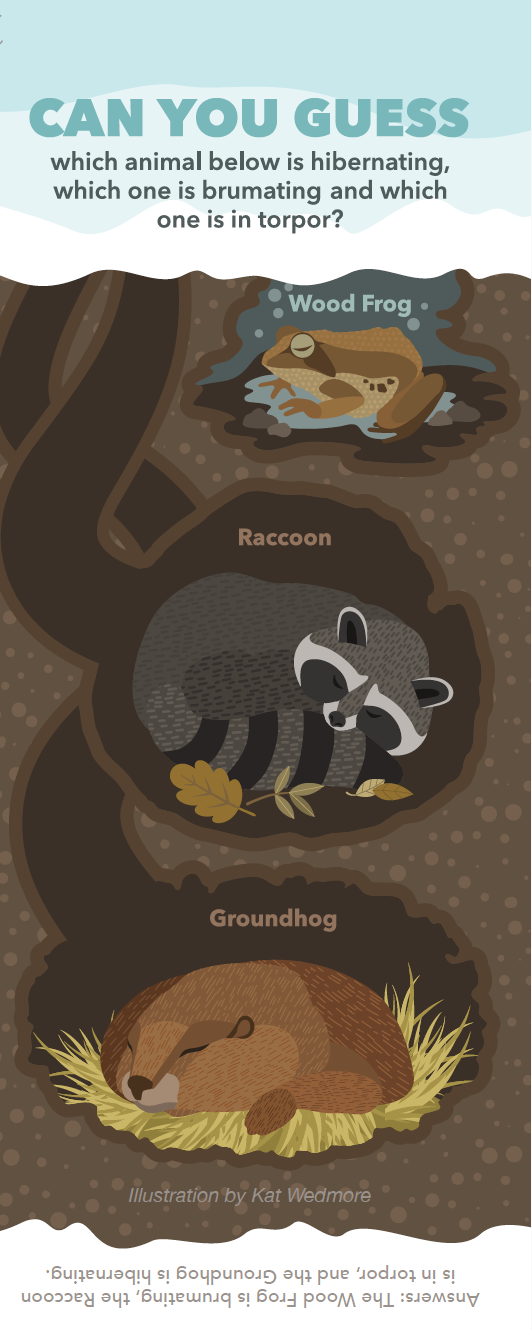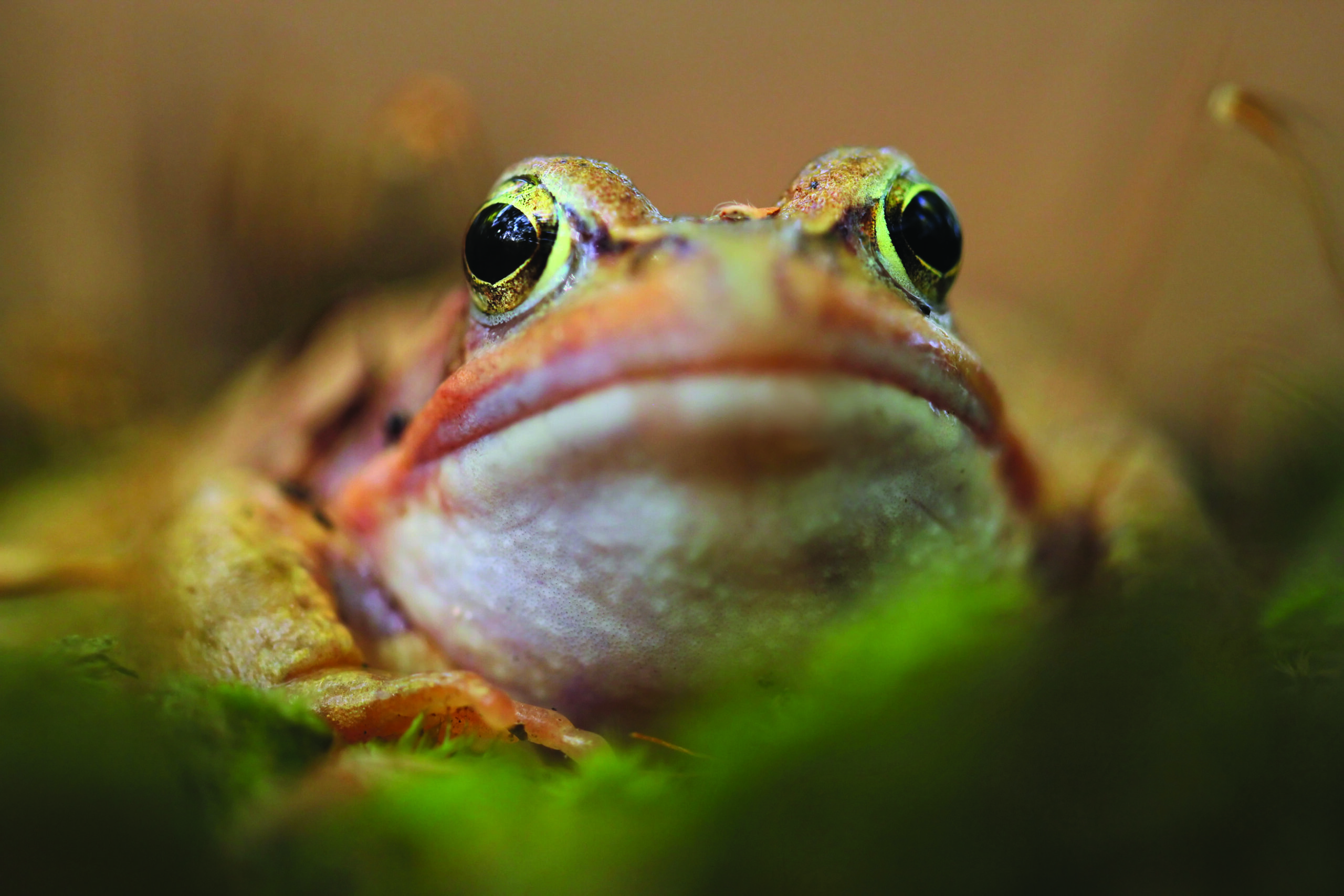Three Ways Animals Sleep through the Winter
How do you spend your winter? Maybe you wear extra layers when you go outside so you don’t get cold. Maybe you have a ravenous appetite and fill up on comfort food. Or maybe you prefer to skip the season entirely and vacation somewhere tropical until spring. Animals navigate the harsh conditions of winter a lot like we do, whether that means wearing a thick winter coat, putting on a little extra weight or migrating south. But the most interesting survival strategy is unique to the animal kingdom; let’s learn about three ways animals sleep through the winter.
Deep Sleep 101: True Hibernation, Torpor and Brumation
Winter is a harsh season when food is scarce and the temperature is dangerously low. Entering a deep sleep is a way for animals to stay warm and reduce their need for food, all in one go.
“While in this state, an animal’s body temperature and respiration become so low that they appear almost dead,” explains Jerry Kozlanksy, CCPR’s park operations manager of natural resources. “By conserving energy while asleep, the animal can slow down its metabolism and burn up less fat than it would if it were awake. This prevents the animal from starving.” You’re probably picturing a bear snuggled up in its cave sleeping soundly until spring. Well, you might be surprised to learn that there are several different forms of this “sleep.”
Let’s discuss three: true hibernation, torpor and brumation.
True Hibernation: A Long Snooze till Spring
There are several factors that make true hibernation unique and somewhat rare. Animals in hibernation put on enough fat to last several months without food, then go into a deep sleep and don’t wake again until spring. Hibernators don’t wake up for any reason during their long winter nap — not even to eat or use the bathroom.
Torpor: Waking up for a Snack Break
Think of torpor as a sort of mini-hibernation. While true hibernation lasts through the winter, torpor only lasts for a few days or weeks. Animals in torpor get up periodically when the temperature rises or food becomes less scarce.
What is another major difference between true hibernation and torpor? Torpor is involuntary. While we still don’t know everything about the biology behind torpor scientists believe that animals go into torpor involuntarily while true hibernation is a state that animals choose to enter.
Let’s revisit that sleepy bear mentioned earlier.
“I always tell people that bears are actually not true hibernators but that they go into torpor,” says Kozlanksy. “So, if you were to crawl into a bear’s den in the middle of winter and give it a poke it would wake up. It might take a little while, but it will wake up. An animal that goes through true hibernation would take much longer to come out of that deep sleep.”
Brumation: Cozy Cold-Blooded Critters
Brumation isn’t technically a form of hibernation, but it’s close. Only cold-blooded animals such as amphibians and reptiles brumate. Mammals do not brumate.
Cold-blooded critters might only brumate for a month or two which is more sporadic than mammals. Brumating animals eat less food before going to sleep whereas hibernating animals eat a lot more. This is because they must be able to live off that fat for several months while they’re asleep.
Also, you won’t find a brumating animal cuddled up in a cave or burrow. Amphibians and reptiles brumate in some pretty strange ways. Some species of frogs spend the winter at the bottom of a lake burrowed into the mud. One remarkable species of frog, the wood frog, freezes solid during the winter and thaws out in the spring. While we may not go to sleep until spring, some animals do.

So, whether you see a raccoon walking around in the snow or glimpse a sleeping groundhog in its burrow, you can appreciate just how much effort it takes for animals to adapt to or sleep through the winter.
Written By: Grace Fishback
Grace is the Marketing Coordinator for Carmel Clay Parks & Recreation. Grace has written the creative for numerous marketing publications and campaigns.

